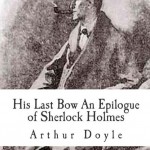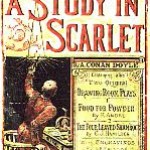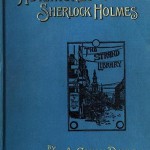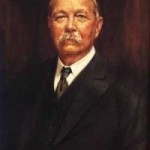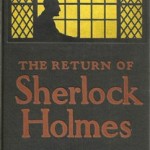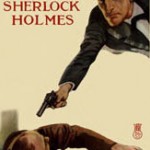Never before had Holmes and Watson come up against a brotherhood like the Kipling League. Dedicated to their Patron Rudyard Kipling, the Poet of Empire, the League’s sole allegiance was to England’s civilising mission. Its members would allow nothing to get in their way.
Tim Symonds’ new novel Sherlock Holmes And The Dead Boer At Scotney Castle will be published March 19 by MX Publishing, known for their Sherlock Holmes’ authors.
Holmes and Watson take the train to address the mysterious Kipling League at Crick’s End, a Jacobean mansion in deepest Sussex. A body is found in a wagon pond at nearby Scotney Castle – but why the wagon pond and not the moat? And why unclad? What is the meaning of the pair of shiny dark glasses clutched in one hand? And that hatband – could it really be from the skin of a yellow and brown spiny snake?
Note: Link above contains our affiliate code
An excerpt from the book:
‘Late Extra! Dead Body at Scotney Castle,’ the boy sang, his face turned upwards, his apron displaying the bold headline black upon yellow on a poster. ‘Heavens, Holmes,’ I called over, amused. ‘Fame indeed. Scotney Castle has found its way into the Evening London Standard!’
I anticipated my companion would wave aside the small beseeching newspaper vendor. Had he declined to make the purchase, I would have followed suit while offering the boy a ha’penny in compensation. Thereby we may never been hurled into the extraordinary matter of the dead Boer at Scotney Castle.
Rather than waving the boy away, Holmes stared down at him and demanded ‘What did you say?’
‘Dead Body at Scotney Castle,’ the vendor sang out once more, pushing a copy into my companion’s outstretched hand and taking three-halfpence in return.
Holmes unfolded the newspaper and turned to an inside page as directed. He read for a moment and glanced up.
‘Watson, listen to this. ‘LATE EXTRA. From our local Correspondent by wire’.’
The report commenced with the curiously garbled sub-heading ‘Well-Dressed Unclad Body Discovered At Lamberhurst’ and continued, ‘To-day, at around 4pm near the village of Lamberhurst, on the Kent and Sussex border in the Valley of the River Bewl, in the undertaking of his rounds, James Webster, woodman on the Scotney Castle Estate, came across the unclad body of a man lying mostly submerged in the wagon pond, off the old Carriage Drive at Kilndown Wood, believed drowned. Age is estimated around 50. Gentlemen’s clothes of a good quality and condition lay at a short departure from the verge, neatly piled, and topped by a crimson hat like a bowler out of a Mexican sombrero, bearing a hatband made from the skin of a yellow and brown spiny snake. Death is estimated to have taken place within the previous hour as the arms and legs were still supple. It was noticeable the dead man’s chest was unusually seared by the sun in a triangle to a point some five inches above the navel, with similar ruddiness of arms right to the armpit, and the legs from above the calf to just below the knee. Exact details are few but no traces of struggle or nearby disturbance have been reported. A man in this garb was seen standing at the edge of the wagon pond in the middle of the afternoon, around three o’ clock, by Lord Edward Fusey, owner of the Estate, whose house overlooks the valley from the top of a nearby hill. While suicide is a possibility, the empty pockets of the clothing and weathered condition of the skin incline the Lamberhurst constable to agree with Lord Fusey’s suggestion the body is most likely that of a passing tramp, who, having stolen a gentleman’s clothing, felt obliged to bathe in the wagon pond and consequently drowned.”
Turning to me with an air of excitement, Holmes demanded, ‘Well, Watson, what do you make of it?’
‘What do you make of it, Holmes?’ I parried. He was on a hot scent but as yet I could not in the least imagine in what direction his inferences were leading him. Without responding to my own query, he returned to the Standard and continued, ”A pair of shiny dark glasses was discovered between finger and thumb, but identifying papers or other memoranda are lacking. The old smugglers’ track is a favoured route of indigents and vagabonds overnighting in the castle ruins on their way to London. No further action is expected’.’
Holmes lowered the newspaper. ”The body is most likely that of a passing tramp?” he repeated. ‘How could this be?’
He raised the paper again and continued reading out loud. ”The probability remains that the deceased has been the victim of an unfortunate accident which should at the very least have the effect of calling the attention of the Estate owner to the parlous condition of the wagon pond verges’.’
Once more Holmes lowered the newspaper, frowning. ‘Again, Watson, I ask, what do you make of it?’
‘Apart from the sensationalistic prose, Holmes, what should I make of it?’ I replied evasively. ‘Any self-inflicted death or accident is a sad event.’
He cocked his head. ”Self-inflicted death or accident’ you have already decided?’ he demanded. ‘Is it not obvious to you this matter strikes rather deeper than you think?’
Where you can buy:
– Amazon: Sherlock Holmes and The Dead Boer at Scotney Castle (contains our Amazon affiliate code)
– Foyle’s Online www.foyles.co.uk/item/Fiction-Poetry/Sherlock-Holmes-and-the-Dead-Boer-at-Scotney-Castle,Tim-Symonds-9781780920917
– North America www.mxpublishing.com/brand/Tim+Symonds


